Malcolm R. Campbell's Blog, page 210
October 6, 2014
Tell me a story
Hey! Mr. Tambourine Man, play a song for me
I’m not sleepy and there is no place I’m going to
Hey! Mr. Tambourine Man, play a song for me
In the jingle jangle morning I’ll come followin’ you
–Bob Dylan
We who write are tambourine men, poets, liars, con men, dreamers, pied pipers, spinners of yarn, spinners of mirages, tinkerers with reality, profane disciples of all that’s engraved in the sand on a beach, creators and destroyers of worlds, demons and tricksters and gods, snakes in the grass, and golden eagles flying high above the divides between night, day, worlds, sleep and consciousness.
 We who write intend to lead you astray for that is where you will find yourself, your salvation, your journey’s beginning, your lover, your treasure and everything that matters and gives substance to life.
We who write intend to lead you astray for that is where you will find yourself, your salvation, your journey’s beginning, your lover, your treasure and everything that matters and gives substance to life.
If you read our words, if you follow the jingle jangle of our stories, we promise you that whatever you thought was engraved in stone was in fact fluid and that whatever you thought was fluid was your imagination and that reality is always a deck of cards that you can choose to play face down or face up depending upon your penchant for fate and destiny.
We who write cannot be trusted to give you a straight answer for we only know dark and crooked roads and the stories that live alongside them. But do not take care or look behind you for the prize comes with the unexpected, the epiphany hidden amongst devils and the light that shines on the darkest night for those who walk with their eyes wide open.
Believe what you will, but when you follow tambourine men, poets, and liars there is no turning back though you may believe some dream or illusion that you have turned back as we all go deeper into the labyrinth toward Minotaurs that will–if the gods be kind–tell us the secrets of life if we survive the journey.
We who write are always en route to the center of the labyrinth where all stories lead us, and where they will lead you, too, if you dare to say, “Tell me a story.”
 Malcolm R. Campbell is the author of “The Seeker,” “The Sailor,” “The Betrayed,” and other dangerous fiction.
Malcolm R. Campbell is the author of “The Seeker,” “The Sailor,” “The Betrayed,” and other dangerous fiction.


October 4, 2014
Clocking ticking down on ‘The Sun Singer’ availability
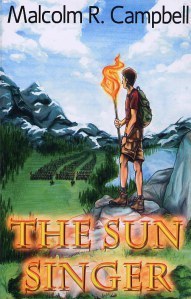 My contemporary fantasy adventure The Sun Singer is available for a limited time only from Second Wind Publishing. My estimate is that the availability period for new copies of the paperback from Amazon will end in another three weeks.
My contemporary fantasy adventure The Sun Singer is available for a limited time only from Second Wind Publishing. My estimate is that the availability period for new copies of the paperback from Amazon will end in another three weeks.
The novel tells the story of young Robert Adams who steps into an alternate universe to finish his avatar grandfather’s mysterious work. He must learn to harness the power of the sun to survive the swords of the enemy soldiers and to heal the wounded in the resistance group fighting the evil king.
Robert must also learn to rely on himself and to trust his psychic abilities. He has been tested before. Now he will be tested again on a trip to the Montana mountains that begins as a family vacation and ends as a hero’s journey
Time is short, so if this is your cup of tea, head out to Amazon soon while supplies last.
I hope you enjoy the story. It has 15 5-star reviews and one 4-star review, so I’m happy with the readers’ response to my story of magic and mountains.
–Malcolm


September 28, 2014
Spackle, Mop, Molding, Caulk, etc.
If you’re a writer, you know this already: sometimes one has to stop writing and clean up the house.
 This summer, my wife and I have been more ambitious than cleaning up, though goodness knows we let that slide for way too long.
This summer, my wife and I have been more ambitious than cleaning up, though goodness knows we let that slide for way too long.
The first word of the summer is downsizing. That means getting rid of stuff we’ve been saving for years and really don’t need. Some of the stuff never came out of the boxes from the day we moved into this house in 2002. I guess if we didn’t open it in 12 years, chances are we don’t need it.
And all those extra books. Fifteen boxes were donated to the library for their annual sale. I feel better about that than putting them in the trash.
When the House Settles, Get Out Your Spackle and Caulk
Spackle has gone up on cracks that showed up as the house settled. New molding has gone down where (more house settling) created a gap between the original molding and the linoleum. The carpets were washed last night with our spray-and-vac, and look much better this morning.
I can’t count how many tubes of caulk we’ve gone through, how many sponges, paper towels, and brushes that have been used up, or how many times the ladder has come in front the garage. (Don’t ask about the garage yet, though it’s gotten better.)
You can probably say, “been there, done that, got the tee shirt.” It’s amazing how little time it takes for a new house or a new car to lose that “new” look and get to the point where washing things as often as you did on the first day loses its appeal.
While cleaning and fixing, I’ve been thinking of the next ghost story. I wish I could say that some Disney Elves or friendly spirits had stopped by to help out. Now THAT would be a story!
Today my hands smell like bleach. Yesterday they smelled like Windex. Tomorrow, maybe my hands–along with the house–will smell clean and look neat.
I hope you’re having a productive weekend as well.
Malcolm


September 25, 2014
Fiction writing: is it about the money?
Yes and no.
 Yes, because unless you’re writing stories for your children, for your own amusement, or for small, non-paying newsletters and magazines, full-time fiction writers consider their career a business even if they are partially supporting themselves as teachers, researchers and other jobs.
Yes, because unless you’re writing stories for your children, for your own amusement, or for small, non-paying newsletters and magazines, full-time fiction writers consider their career a business even if they are partially supporting themselves as teachers, researchers and other jobs.
No, because focusing on money–for most writers–gets in the way of developing and telling a story. This is not to say that we’re unaware of the realities regarding salable novels and short stories by writers at one stage of their career or another. One reality is that, without a strong platform or a lot of friends in the business, most unknown writers will not be able to sell novels as long as those written by Diana Gabaldon, Eleanor Catton and Donna Tartt. Another reality is that, if we’re writing in a genre, we know what’s more or less acceptable within that genre and what isn’t.
So, while we can choose to stray outside the “rules” of genres, especially as defined by the mainstream of out intended readers and we can choose to write 500,000-word first novels, most choices about characters, plots, settings, dialogue and themes are (or should be) divorced from the question: will this make me more money or less money?
I dislike the trite phrase that “writers must wear multiple hats.” But it’s short, sweet and true. At some point–and perhaps this usually comes from experience–we learn how to compartmentalize our writing business. While those compartments–marketing, sales, research, writing, editing–obviously interact with each other, having such divisions in our work allows us to concentrate on one or the other without being distracted by concerns that don’t relate to the task of the moment.
Worrying About Work That’s Already Completed
New writers worry a lot about rejection slips and why it’s taking publishers or agents so long to respond to manuscripts and queries. Quite often, they’re spending so much time checking the mail and e-mail for a yes/no response about the last story they sent out, they find themselves unwilling or unable to work on the next story. Then, if the response they’ve been waiting for finally comes in as a NO, they’re in the worst possible place to be thinking up something new when, if they had something new already in progress, they could go back to it.
Writers also learn–and maybe this is another experience thing–to separate the kinds of writing they do. Those of us who have partially supported ourselves by writing feature articles, grant requests, news releases, computer help files, and training materials can step from one to the other without having to re-learn approaches and styles. The same is true when fiction’s involved. We can transition from writing news releases during the day to writing a Gothic novel at night without getting mixed up about what we’re writing any more than a tennis player worries about using different techniques and equipment when s/he plays a round of golf.
Compartmentalizing our work not only helps us organize the work week rather than trying to run a business by randomly jumping from one task to another, it helps us tell stories without thinking about money. If we write commercial fiction as well as literary fiction, we learn to step into the needs of the story and genre we’re dealing with. We know before we start what the rules are and we know that the commercial fiction is probably more salable, but then we put that knowledge aside and tell the story.
If money’s a concern while we’re writing the story, the story will probably suffer for it.
–Malcolm
 Malcolm R. Campbell is the author of contemporary fantasy, satire and paranormal stories and novels, including “The Sailor.” The novel tells the story of a pacifist who ends up serving aboard and aircraft carrier during the Vietnam War. Truth be told, friends and family cause more trials and tribulations than most of the demands of shipboard life.
Malcolm R. Campbell is the author of contemporary fantasy, satire and paranormal stories and novels, including “The Sailor.” The novel tells the story of a pacifist who ends up serving aboard and aircraft carrier during the Vietnam War. Truth be told, friends and family cause more trials and tribulations than most of the demands of shipboard life.


September 23, 2014
Meditations on Seeds and Their Immense Journey
from Magic Moments:
“The seeds on my carpet were not going to lie stiffly where they had dropped like their antiquated cousins, the naked seeds on the pine cone scales. They were travelers. Struck by the thought, I went out next day and collected several other varieties. I line them up now in a row on my desk—so many little capsules of life, winged, hooked or spiked. Every one is an angiosperm, a product of the true flowering plants. Contained in these little boxes is the secret of that far-off Cretaceous explosion of a hundred million years ago that changed the face of the planet. And somewhere in here, I think, as I poke seriously at one particularly resistant seedcase of a wild grass, was once man himself.” – Loren Eiseley in “How Flowers Changes the World”
I have always been fascinated by the science and mystery of seeds. I first noticed seeds when I opened packages of Ferry’s seeds for the back yard garden mother chaperoned when I was young. Later on, I discovered the poetic writings of such naturalists as Loren Eiseley whose 1957 book The Immense Journey blended in my mind the facts of science with the mysteries behind the world’s metaphors about seeds, seasons, and the cycles of time.
Place a seed in the soil and it waits. Perhaps it dreams. Years ago, I saved a cartoon out of a magazine–perhaps it was the Saturday Review or The Atlantic–that showed an acorn dreaming of the mighty tree it would become, but then in succeeding drawings, that dream became smaller and smaller as a squirrel nibbled it away. While there was something dark and amusing about this cartoon, it bothered me because it represented what might have been. While they wait, perhaps seeds dream of the roses and pine trees and grasses they will become while worrying about squirrels.
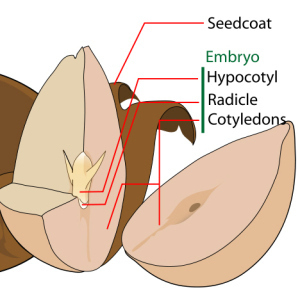
Avocado Seed – Wikipedia drawing
We make much of spring in our metaphors and myths and for that, I suppose, we have seeds and flowers to thank, for they not only made it possible for us to be here, they gave us a road map that reads equally well in planting guides and poems and fantasy. When the waiting seed meets water and warmth, enzymes release food energy, the seed coat opens, oxygen enters, and growth begins followed by the urgent need to breath the soil with a sprout and first leaves.

flax flowers
I used flax, flax seeds and linen in Sarabande because the steps taking seeds to yarn remind me of the steps taking a child to an adult and the equally mysterious steps leading that adult’s whole self to bloom into all the possibilities once dreamt of by the egg in the womb. But I could have used roses or even squash!
I see seeds in stories where seeds aren’t mentioned because the metaphors and mysteries of seeds have stayed with me for years, ever since the first seed was planted in my mind when I opened a Ferry’s packet over the waiting earth of our garden and saw that what I held in my hand would become squash and become tomatoes and with even more seeds that would one day lead to probable plants and worlds spinning off in all directions.
The “immense journey” in the title of Loren Eiseley’s classic book refers, of course to the journey of life on the planet. Yet I cannot help but think that each seed also sets out on an immense journey after its period of dormancy ends with the spring. Perhaps at some  level of our psyches, every flax seed and every human knows where the journey will take them. Perhaps we know and then we forget until the water, warmth and light have reached their appointed moments in our transformation.
level of our psyches, every flax seed and every human knows where the journey will take them. Perhaps we know and then we forget until the water, warmth and light have reached their appointed moments in our transformation.
“Flowers changed the face of the planet,” wrote Eisely. “Without them, the world we know—even man himself—would never have existed. Francis Thompson, the English poet, once wrote that one could not pluck a flower without troubling a star.” I hope Thompson was right.
As I ponder this post written for my soon-to-be-discontinued blog “Magic Moments,” I think that with the increasing amount of discussion these days about the Goddess and Mother Earth, that we forget that seeds germinate in darkness; without it, they come to nothing. We are often quick to marginalize, ban and libel everything dark from the dark goddess to the mysteries of the moon to night itself. There is symbolism in the immense journey of seeds that we can apply to our lives, beginning with the idea that if we are kept out of the darkness by religions, cultures, industries, governments and societal mores and folkways, we are stunting our growth from the beginning.
 Malcolm R. Campbell is the author of the Kindle paranormal/spiritual short story “The Lady of the Blue Hour.”
Malcolm R. Campbell is the author of the Kindle paranormal/spiritual short story “The Lady of the Blue Hour.”


September 21, 2014
Briefly Noted: ‘ Burning Down the House’
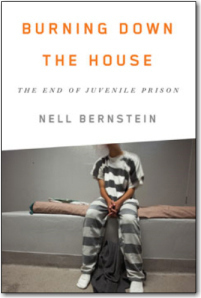 A September 16 2014 interview with author Nell Bernstein in The Awl (“The Case for Abolishing Juvenile Prisons”) begins with this overview:
A September 16 2014 interview with author Nell Bernstein in The Awl (“The Case for Abolishing Juvenile Prisons”) begins with this overview:
“Last month, archaeologists identified the first of the fifty-five human bodies recently exhumed at Florida’s Dozier School for Boys—a now-shuttered juvenile prison where, for decades, guards abused children, sometimes to death, despite cyclical scandals and calls for reform spanning almost a hundred years. Dozier represents an atrocious extreme, but the failures of America’s juvenile justice system are widespread. Whether labeled ‘boot camps,’ ‘training schools,’ ‘reformatories,’ or other euphemisms, juvenile prisons have long harbored pervasive physical and sexual abuse. In one survey, twelve percent of incarcerated youth reported being sexually abused in the previous year—a figure that likely understates the problem.”
Since so-called juvenile delinquents from my north Florida high school were purportedly sent to this school, I reported on several books about “The White House Boys” in an earlier post. I found the interview with the author of Burning Down the House perceptive, compassionate and fascinating, and wanted to mention her book here for those who wonder about how we handle juvenile offenders, especially those charged with relatively minor misdeeds.
From the Interview: “I tried to come in with a reporter’s open mind. But I have known kids who’ve been in this system for decades, so I did come in believing, from my own experience, that prison was a consistently damaging intervention that tended to make things worse for kids rather than better.”

Bernstein – click on the photo to see the author’s website
From the Publisher: When teenagers scuffle during a basketball game, they are typically benched. But when Will got into it on the court, he and his rival were sprayed in the face at close range by a chemical similar to Mace, denied a shower for twenty-four hours, and then locked in solitary confinement for a month.
One in three American children will be arrested by the time they are twenty-three, and many will spend time locked inside horrific detention centers that defy everything we know about how to rehabilitate young offenders. In a clear-eyed indictment of the juvenile justice system run amok, award-winning journalist Nell Bernstein shows that there is no right way to lock up a child. The very act of isolation denies delinquent children the thing that is most essential to their growth and rehabilitation: positive relationships with caring adults.
Bernstein introduces us to youth across the nation who have suffered violence and psychological torture at the hands of the state. She presents these youths all as fully realized people, not victims. As they describe in their own voices their fight to maintain their humanity and protect their individuality in environments that would deny both, these young people offer a hopeful alternative to the doomed effort to reform a system that should only be dismantled.
-
For those who know about The White House boys, and other young people sent to abusive camps and schools, the interview and the book are haunting. If only such things had been said 50 to 100 years ago.
–Malcolm


September 20, 2014
When you write, are you happy?
“I believe that half the trouble in the world comes from people asking ‘What have I achieved?’ rather than ‘What have I enjoyed?’ I’ve been writing about a subject I love as long as I can remember — horses and the people associated with them, anyplace, anywhere, anytime. I couldn’t be happier knowing that young people are reading my books. But even more important to me is that I’ve enjoyed so much the writing of them.” – Walter Farley (author of The Black Stallion)
 At book signings, I see long lines of readers waiting for one widely known author or another to arrive, and this is good, of course, because the people love books and want to meet the bestselling authors they usually only see on TV. Of course, I’m there, too, in the same line waiting for my 30 seconds with the author where s/he is signing books so quickly, it seems like his or her tired hand will need a lot of Aspercreme at the end of the evening.
At book signings, I see long lines of readers waiting for one widely known author or another to arrive, and this is good, of course, because the people love books and want to meet the bestselling authors they usually only see on TV. Of course, I’m there, too, in the same line waiting for my 30 seconds with the author where s/he is signing books so quickly, it seems like his or her tired hand will need a lot of Aspercreme at the end of the evening.
To many people, an author is the name on the book, the name they trust for the kind of reading they like, somebody who shows up on a talk show or who’s interviewed by Kirkus or Publishers Weekly. If you’re not a writer, you probably don’t think about what your favorite authors are like while they’re writing. I often wonder if those thinking about becoming authors are skewed off the road to reality by seeing authors as celebrities showing up with a lot of fanfare at a bookstore or a studio.
A favorite line of mine out of an old writing book went something like this: Most people don’t want to write, they want to have written. They’re looking only at what comes when the book is done; that’s only the tip of the iceberg in most authors’ lives. Most of the time, they’re alone with a pencil, pen, typewriter or computer. They’re wearing jeans and a tee shirt and look like they haven’t gotten enough sleep for years. It’s hard work, writing, and I think that people who imagine seeing their books on the bestseller lists don’t always think about exactly what they’ll have to do to make that happen.
Is the work fun?
 Since most of a author’s life is spent researching and writing, enjoying this part of the process seems to me to be an important prerequisite to considering poetry, short stories, novels and plays as part of one’s career. The writer at work, should be the picture of bliss and contentment. Okay, there’s frustration and profanity, too, and on the bad days, an extra glass of Scotch. But most of the time, authors who like being authors are happy while they’re writing.
Since most of a author’s life is spent researching and writing, enjoying this part of the process seems to me to be an important prerequisite to considering poetry, short stories, novels and plays as part of one’s career. The writer at work, should be the picture of bliss and contentment. Okay, there’s frustration and profanity, too, and on the bad days, an extra glass of Scotch. But most of the time, authors who like being authors are happy while they’re writing.
In fact, writing is like drugs. Once an author finishes a book, s/he will variously be tired, excited, joyful, elated and (sometimes) relieved. But soon, s/he will have to be writing again because nothing else compares with it. Perhaps it’s a meaningful addiction or perhaps it’s a variation of the kind of high a runner often feels or a tennis player or a musician. Doing the work is the author’s focal point.
So, my two cents for today is to suggest that if the writing itself doesn’t make a person happy, perhaps they’re in the wrong career. At her sarcastic best, Dorothy Parker once said, “If you have any young friends who aspire to become writers, the second greatest favor you can do them is to present them with copies of The Elements of Style. The first greatest, of course, is to shoot them now, while they’re happy.”
It’s not an easy life and, when it comes down to it, most people really don’t like writing all that much, Reading, yes, but writing: forget it. They’re thinking about going on a talk show and having dinner with Jo Rowling, but not about the work.
If the work isn’t making a person happy, then it seems pointless to me to be writing fiction with big dreams but no sense of the day to day way most of one’s time will be spent. On the other hand, if it makes you happy, your friends and family make consider you a lost cause since–quite clearly–your addiction to your art is almost more important than anything else.
–Malcolm
Malcolm R. Campbell is the author of Emily’s Stories, The Seeker, Jock Stewart and the Missing See of Fire and other books that were a real hoot to write.


September 19, 2014
Glacier September 19 Update: Access to Logan Pass Changes This Weekend
from NPS Glacier National Park
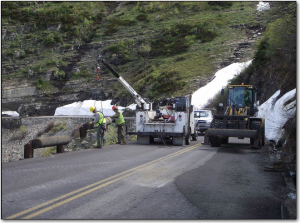
Guard rail replacement in June – NPS Photo on Flickr
The last day to access Logan Pass by vehicle from the east side of Glacier National Park will be Sunday, September 21, allowing accelerated fall season rehabilitation on the Going-to-the-Sun Road. Vehicle traffic will be restricted on the east side near the St. Mary Campground beginning Monday, September 22. Vehicle access to Logan Pass will be available from the west side of the park through Sunday, October 19, weather permitting.
Fall access to east-side hiking trails between the St. Mary Campground and Logan Pass will be limited during road rehabilitation activity beginning Monday, September 22. Hikers wanting to hike any of the trails that are accessed, or may be an exit point, along the east side of the Going-to-the-Sun Road, are highly encouraged to contact the park at 406-888-7800 before departing. The trails that are affected include Siyeh Pass, Baring Basin, Piegan Pass, Otokomi, St. Mary Falls/Baring Falls/Virginia Falls, Gunsight and Sperry Trails. For more information on status of trails and access, please contact the park or visit http://www.nps.gov/glac/planyourvisit/trailstatusreports.htm.
Access to some backcountry campsites on the east side of the park will also be affected. All backcountry campers are required to have a permit from the park’s backcountry office for overnight stays. All backcountry permits must be obtained from the Apgar Permit Center at this time of the year. For more information on backcountry camping and trail access, please contact the park at 888-7800 or visit http://www.nps.gov/glac.
Times and locations for boat inspections for boats launching in Glacier National Park are changing. Inspections for the west side of the park will be conducted at the Apgar Backcountry Office, 8:00 a.m. to 4:00 p.m. daily through the end of October. Boat inspections for the east side of the park, Many Glacier and Two Medicine areas, are by appointment only. Appointments are available by contacting the park at 406-888-7800.
The Logan Pass Visitor Center will be open through this Sunday, September 21, 9:30 a.m. to 4:00 p.m. The Apgar Visitor Center and the St. Mary Visitor Center are open through October 5, 8:00 a.m. – 5:00 p.m. daily.
Many Glacier Bridge Replacement
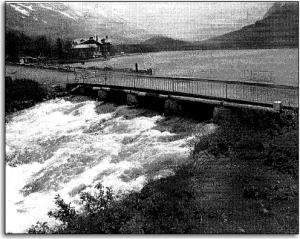
Swiftcurrent Bridge, which provides access to Many Glacier Hotel, was losing its structural integrity, had a cracked deck, and could no longer handle high water. – NPS photo from the park planning document
Visitors to the Many Glacier area of the park should be aware that the replacement of the Swiftcurrent Bridge will begin shortly after the Many Glacier Hotel closes for the season on Sunday, September 21. Visitors can expect short delays beginning September 26. As of September 29 there will be no vehicle or pedestrian traffic as the bridge is replaced. It is anticipated that the work to replace the bridge will continue through mid-November.
Access to Cracker Lake and the Piegan Trail will be through the Grinnell Picnic Area, at the Grinnell Trailhead. The Swiftcurrent Bridge is located at the foot of Swiftcurrent Lake and provides vehicle and pedestrian access to the Many Glacier Hotel Historic District, and the Many Glacier Hotel.
Autumn visitors to Glacier National Park will find less crowds, cooler temperatures, and changing vegetation colors. Area residents and visitors are reminded that the park is open year-round and park recreational opportunities can be found during all seasons.
-
Nice to see infrastructure work going forward.
–Malcolm
 Malcolm R. Campbell is the author of three novels partially set in Glacier National Park, “The Sun Singer” (paperback) “Sarabande” (out of print) and “The Seeker” (on Amazon and Smashwords in paperback and e-book).
Malcolm R. Campbell is the author of three novels partially set in Glacier National Park, “The Sun Singer” (paperback) “Sarabande” (out of print) and “The Seeker” (on Amazon and Smashwords in paperback and e-book).


September 17, 2014
Will Earth last forever in spite of the damage?
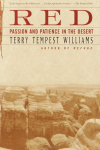 “The eyes of the future are looking back at us and they are praying for us to see beyond our own time. They are kneeling with hands clasped that we might act with restraint, that we might leave room for the life that is destined to come. To protect what is wild is to protect what is gentle. Perhaps the wilderness we fear is the pause between our own heartbeats, the silent space that says we live only by grace. Wilderness lives by this same grace. Wild mercy is in our hands.” – Terry Tempest Williams in “Red”
“The eyes of the future are looking back at us and they are praying for us to see beyond our own time. They are kneeling with hands clasped that we might act with restraint, that we might leave room for the life that is destined to come. To protect what is wild is to protect what is gentle. Perhaps the wilderness we fear is the pause between our own heartbeats, the silent space that says we live only by grace. Wilderness lives by this same grace. Wild mercy is in our hands.” – Terry Tempest Williams in “Red”
Some claim that no matter what foolishness we bring to our planet, Earth abides. Do you agree?
I hope that claim is more than wishful thinking. For years I thought an ever abiding Earth was a certainty and that even in the worst-case nuclear winter we can imagine, the planet could shake off the damage. Now, I think we’ve done too much for that certainty.
Author George R. Stewart certainly took that view in his famous 1949 science fiction novel called Earth Abides. While this book, which is among the best novels I’ve ever read, is a eulogy for civilization as we know it, it’s not a story about the end of the Earth. This book is somewhat responsible for my thinking that when all is said and done, the planet will one day be reborn without us.
Plenty of Time?
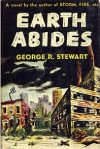 For years, people have said that no matter how badly we treat the environment, the ultimate destruction of the planet is so many years into the future that we still have time to change what we are doing. In that vein, saying that global warming or dying oceans or dangerously high population growth will one day do us in, is about like telling a teenager he needs to save some of his summer job money for retirement or he’ll starve some day.
For years, people have said that no matter how badly we treat the environment, the ultimate destruction of the planet is so many years into the future that we still have time to change what we are doing. In that vein, saying that global warming or dying oceans or dangerously high population growth will one day do us in, is about like telling a teenager he needs to save some of his summer job money for retirement or he’ll starve some day.
As an author, I have absolutely no interest in writing post-apocalyptic fiction. Nonetheless, I often play the what-if game inside my head about all sorts of things that will never evolve into my books.
One game involves walking down a long highway into the future and seeing alongside the road a timeline of positive and negative news events, discoveries, storms, political decisions, and other critical moments. How far can I walk and still find mankind here? Are there actually multiple roads? Perhaps a frightening event leads us to make positive changes and one prospective road gets longer. Perhaps something else lures us into a false sense of security and we begin to think Earth will abide forever. At that point, all the roads get shorter.
If we knew how long the Earth would abide at our present rate of destroying it, what would we do? Would we keep on keeping on or would we finally realize that the world’s wild mercy really is in our hands?
-
This post first appeared on my now-discontinued Magic Moments blog in 2012.
–Malcolm


September 16, 2014
Sick cat = sleepless night
 Our large calico cat named Katy is, in her estimation, queen of the household, ruling the other two cats.
Our large calico cat named Katy is, in her estimation, queen of the household, ruling the other two cats.
She spends a lot of the day squeezed in behind me on my large swivel desk chair.
A week or so ago, my wife had a roller pan filled with blue paint for a hallway touch-up project. Katy participated in this project by jumping into the paint and then running throughout the house on the light-colored carpet.
Clean-up consisted of applying many cleaners, potions, traditional spot removers and elbow grease to the blue cat prints that adorned the hall and living room.
The noisier part of clean-up, that included my getting scratched up and listening to howling, consisted of scrubbing the blue paint off her feet in the sink before she licked it off and got sick.
Time went by until a night ago when she either had one heck of a hairball, was finally reacting to the paint she got too before we did, or somehow got into one of the other fix-up the house products such as the spackle. (She seemed more interested in the spackle than necessary.)
She is the hairball queen, but after a little too much throwing up and a refusal to east, we filled her mouth with the gooey anti-hairball product we call gat goop. Katy doesn’t like cat goop and resents people prying open her mouth and putting dollops in there in such a way that she can spit them back out.

The paint looked worse on the carpet than it does in this quick photo
She did in the dark afterwards behind a rocker after that, always a sign that a cat is either spooked or sick. She was still hiding the next day and turned up her nose at food. I kept checking on her until 3:30 a.m., after which my wife checked on her. A hairball is one thing, a blockage or something acting on her like a poison is another. Can’t ignore that and hope for the best for long.
Finally, yesterday, she at a little food again, became responsive instead of zoned out, and sat in my lap while we were watching “Master Chef.” (Anything to do with food or that can be turned into food gets her attention.) Today, she’s squeezed in behind me again in my desk chair.
It’s nice to see her back to her old self even though she’s also back to trying to hog food and tell the other two cats (as well as us) what to do.
–Malcolm
With three cats in the house, and many before them, I’ve had plenty of models for writing my novella in progress called “Conjure Woman’s Cat.”







